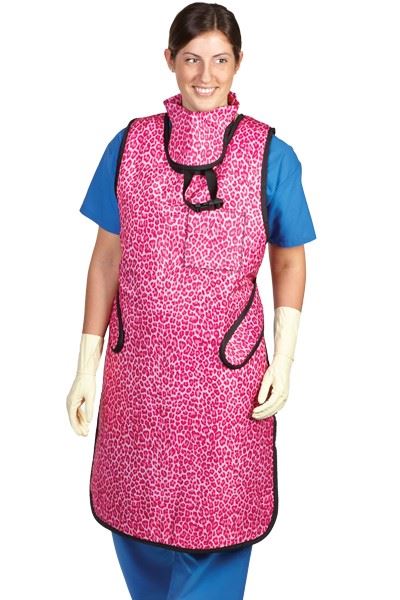-
Home
-
Protective Aprons and Shields Reduce Radiation Exposure
Protective Aprons and Shields Reduce Radiation Exposure
July 18, 2023
 While radiation is an essential tool for the diagnosis and treatment of various medical conditions, it can also pose a significant risk to those who are exposed to it frequently. Therefore, reducing radiation exposure is imperative to ensuring the safety of healthcare workers.
While radiation is an essential tool for the diagnosis and treatment of various medical conditions, it can also pose a significant risk to those who are exposed to it frequently. Therefore, reducing radiation exposure is imperative to ensuring the safety of healthcare workers.
While there is a variety of protective equipment available to achieve this goal, this article will discuss the role of protective aprons and shields in reducing radiation exposure
What Are Protective Aprons and Shields?
Protective aprons and table shields or barriers are personal protective equipment designed to protect healthcare workers from ionizing radiation. While they both help protect those exposed to radiation in healthcare settings, aprons and shields are utilized in different ways.
Aprons
Radiation protection aprons are usually made of lead, which is highly effective in attenuating radiation by absorbing it before it can reach the wearer's body. This type of protection is worn directly by a medical professional.
Protective aprons are available in several different styles depending on the type of procedure being performed and the individual needs of the wearer. Some are designed with better weight distribution for those who need to wear lead apons for longer periods of time, while others are designed to drop away without breaking the sterile field. AliMed’s Apron Style Selector can help you figure out which style best fits your needs.
Shields and Barriers
Shields and Barriers are made of leaded glass or acrylic that can be used to protect parts of the body that are difficult to cover, such as the face, head, and neck. They are ideal for use during longer procedures or when more protection is needed than from an apron.
There are many different styles of radiation protection shields, ranging from partial- to full-body protection.
- Mobile Shields: Easily roll and position to precisely where they are needed
- Table Shields: Protect the difficult-to-target lower body from scatter radiation
- Overhead Shields: Mount to the ceiling and swivel for precise placement
- Full-Body Shields: Provide full-height protection for medical personnel
- Drape Shields: Offer more targeted attenuation at the procedure site
What Is The Role of Protective Aprons and Shields In Reducing Radiation Exposure?
The primary role of protective aprons and shields is to reduce the amount of radiation that healthcare workers are exposed to when they work in areas where ionizing radiation is used. They do this by preventing the majority of the radiation from penetrating the body, which can help prevent short-term and long-term radiation-related health problems.
How Effective Are Protective Aprons and Shields In Reducing Radiation Exposure?
Protective aprons and shields are highly effective in reducing radiation exposure. The use of protective devices such as aprons and shields is especially important in procedures that require the use of high radiation doses, such as fluoroscopy, CT scans, and interventional radiology.
When worn correctly, lead aprons can attenuate 90% or more of scatter radiation. Lead aprons should have at least 0.5 mm Pb-equivalent protection on the front and at least 0.25 mm Pb-equivalent protection on the back, if applicable.
In addition, the use of lead shields can reduce radiation exposure by more than 90%. These shields should have a minimum of 0.5 mm Pb-equivalent protection, but can offer up to 2.0 mm Pb-equivalent protection depending on the material used.
Why Is It Essential to Reduce Radiation Exposure In Healthcare Workers?
Radiation exposure is a known occupational hazard for healthcare workers and can increase the risk of developing radiation-related illnesses such as cancer, cataracts, and skin damage. Healthcare workers may be exposed to significant amounts of radiation during diagnostic or therapeutic procedures, thereby increasing their risk of radiation-related health problems. Therefore, it is crucial to reduce this exposure, especially for those who work in environments where use of radiation is prevelant.
What Should Healthcare Workers Consider When Using Protective Aprons and Shields?
It is crucial for healthcare workers to use protective aprons and shields correctly to ensure maximum radiation protection. In addition to aprons and shields, healthcare workers should also use protective, thyroid shields, gloves and eyewear during procedures that involve the use of ionizing radiation. It is essential to monitor the efficacy of all protective equipment regularly and replace any items that show signs of wear and tear.
Protective aprons and shields are critical components of radiation safety in healthcare settings. When they are used correctly and well maintained, aprons and shields can be invaluable sources of protection against scatter radiation.
Want more information? Visit AliMed’s Radiation Protection Resource Hub to explore our suite of resources, including how to choose, use, and care for radiation protection aprons, shields, gloves, and glasses.